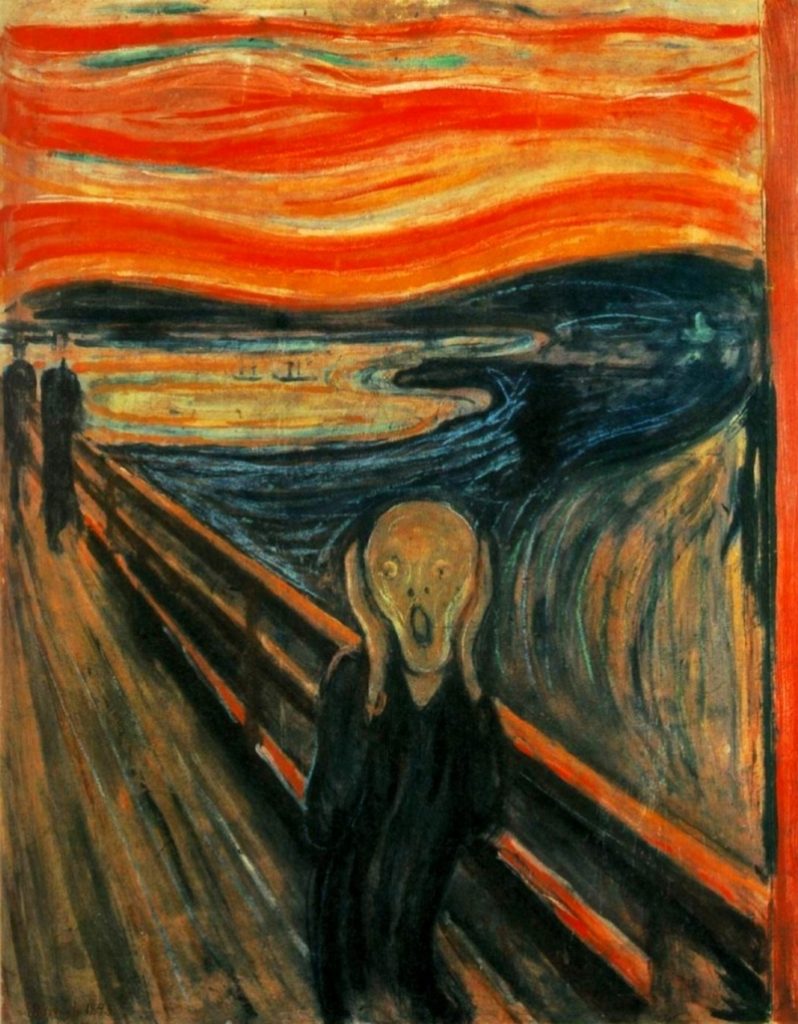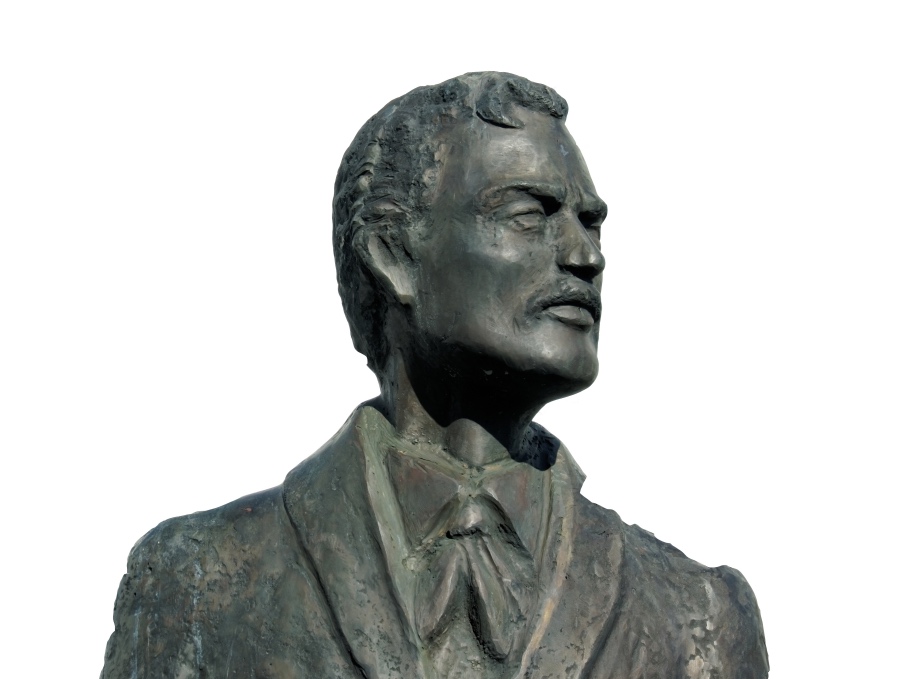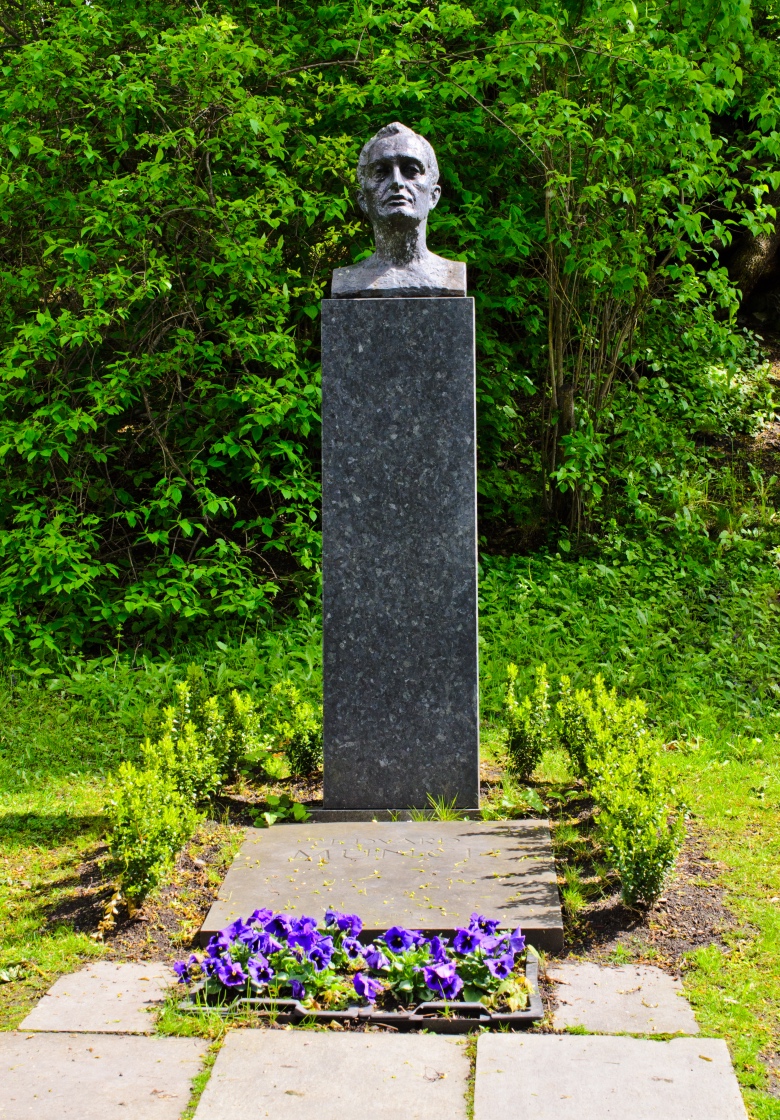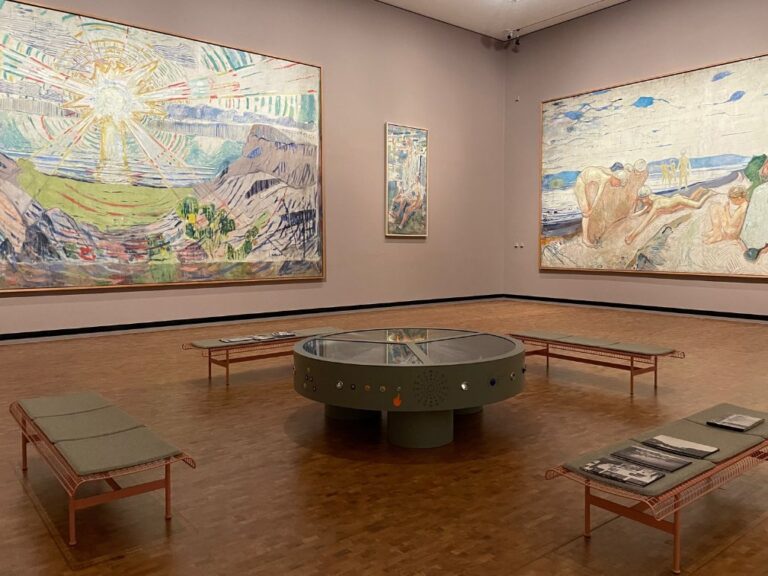Norwegian artist Edvard Munch captured the depths of human emotion like no other. Best known for ‘The Scream’, his haunting, expressive works continue to influence modern art and culture.
Few artists have left as lasting a mark on the world as Edvard Munch. Best known for The Scream, his haunting, evocative style shaped modern art and helped define the Expressionist movement.

However, Munch's artistic legacy goes far beyond his most famous work. His deeply personal and emotionally charged paintings, his influence on Norwegian art, European art, and his tumultuous life story continue to captivate audiences today.
With a new Munch museum in Oslo and a record-breaking sale of his painting Dance on the Beach, his impact remains as relevant as ever.
The Man Behind ‘The Scream'
Edvard Munch’s ‘The Scream' (Skrik in Norwegian) is one of the most recognisable paintings in history, second only to ‘Mona Lisa'. The ghostly, tormented figure against a swirling red sky has become a universal symbol of anxiety and existential dread.
Munch created four versions of The Scream between 1893 and 1910—two paintings, a pastel, and a lithograph.
The 1893 oil painting, housed in Norway’s National Museum, is considered the most significant, while the 1895 pastel version set a record when it sold for $119.9 million in 2012.
Want to see ‘The Scream' for yourself? From the Munch Museum to the National Gallery, Oslo offers several opportunities. Here's how to see ‘The Scream' in Oslo
The inspiration came from a real-life moment of panic. In his diary, Munch described walking in Ekeberg, Oslo, when he suddenly felt overwhelmed by anxiety and imagined “an infinite scream passing through nature.”

The distorted lines and unnatural colours reflect his inner turmoil, marking a shift toward Symbolism and Expressionism.
While often seen as a self-portrait, ‘The Scream' is more of an archetype, representing universal fear and isolation. Its influence extends far beyond art—it inspired the ghost mask in the Scream films, countless pop culture references, and even an emoji.
The painting has also been stolen twice, in 1994 and 2004, before being recovered.
Munch's 5 Most Famous Works
Edvard Munch’s art captured deep human emotions, from anxiety to love and despair. Here are five of his most iconic paintings:
The Scream (1893–1910) – A haunting depiction of existential dread, featuring a tormented figure against a swirling red sky.
Madonna (1894–95) – A sensual yet eerie portrayal of womanhood, blending themes of beauty, love, and death.
The Sick Child (1885–86) – A deeply personal painting capturing Munch’s grief over his sister’s death from tuberculosis.
The Dance of Life (1899–1900) – A symbolic reflection on love and aging, with figures moving through different stages of life.
Self-Portrait Between the Clock and the Bed (1940–43) – A poignant meditation on mortality, showing Munch facing time’s inevitable passage.
Despite these dramatic heists, ‘The Scream' remains Munch’s most iconic work, though it is just one piece of his broader artistic vision, which explored love, death, and human vulnerability with remarkable depth.
A Troubled Childhood
Born in 1863 in Ådalsbruk, Norway, and raised in Oslo (then called Christiania), Edvard Munch's early life was marked by illness, loss, and psychological turmoil—a shadow that would loom over his art for decades.
Tragedy struck early when his mother died of tuberculosis in 1868, leaving five-year-old Edvard and his siblings in the care of their father, Dr. Christian Munch, a devoutly religious military doctor.
Munch was a sickly child, frequently confined to his home due to chronic bronchial illnesses and what he later suspected was pneumonia. Isolated from other children and missing long stretches of school, he spent much of his time drawing, developing an early fascination with capturing human emotion and suffering.
His father encouraged this creative outlet but also reinforced a deep sense of guilt and fear, filling the household with warnings of divine punishment. Munch later described his childhood as overshadowed by “the angels of fear, sorrow, and death.”

In 1877, when Munch was just 14 years old, tuberculosis claimed another victim—his beloved older sister Sophie, who had been like a mother to him.
The trauma of watching her slowly waste away haunted him for years, resurfacing in one of his first major paintings, ‘The Sick Child‘ (1885–86). The work’s raw, emotional brushstrokes and pale, ghostly subject captured his childhood grief and marked his break from traditional realism.
Another of Munch’s sisters, Laura, later developed schizophrenia, deepening his preoccupation with mental illness and existential despair.
Meanwhile, his father’s unpredictable moods and near-fanatical religiosity created a household filled with anxiety, where Munch and his siblings were often subjected to fire-and-brimstone sermons about sin and damnation.
These early experiences shaped Munch’s lifelong artistic themes: death, sickness, emotional turmoil, and existential dread.
Even as an adult, he remained haunted by his childhood fears, once writing, “Illness, insanity, and death were the black angels that kept watch over my cradle and accompanied me all my life.”
The Making of an Artist
Despite initial plans to study engineering, Munch abandoned formal education to pursue art, enrolling at the Royal School of Art and Design in Christiania. He was deeply influenced by contemporary European painters, particularly the Symbolists and Impressionists, and soon developed his own distinct style.
A scholarship allowed Munch to travel to Paris in the late 1880s, where he absorbed the artistic movements of the time.
His breakthrough came in 1892, when his work was exhibited in Berlin. The exhibition was so controversial that it was shut down after just a week—but the uproar only heightened interest in his work.

During the 1890s, Munch created his famous ‘Frieze of Life' series, which explored love, anxiety, jealousy, and death. This period produced some of his most iconic paintings, including ‘Madonna', ‘Anxiety', and ‘Jealousy', culminating in ‘The Scream'.
A Life Marked by Turmoil
Munch’s life was marked by personal struggles with alcoholism, anxiety, and depression, which both fuelled his art and led to severe psychological distress. By the early 1900s, his mental health had deteriorated, causing hallucinations, paranoia, and breakdowns.
In 1908, after suffering auditory hallucinations and partial paralysis, he voluntarily checked into a Copenhagen clinic, where rest and therapy helped stabilise him. Following treatment, he withdrew from bohemian circles and settled in Ekely, near Oslo, adopting a more reclusive life.
Here, Munch focused on landscapes, portraits, and self-reflective works, exploring themes of aging, solitude, and mortality. His ‘Self-Portrait Between the Clock and the Bed' (1940–43) poignantly captures his awareness of time slipping away.
Though largely isolated, Munch continued painting until his death in 1944, finding solace in nature and his art.
The New MUNCH Museum in Oslo
Munch’s importance to Norwegian culture is undeniable, and his vast collection of works is now housed in MUNCH, the striking new museum that opened in October 2021 on Oslo’s waterfront.
Replacing the older and much smaller museum in Tøyen, this 13-story landmark now holds the world’s largest collection of Munch’s works—including paintings, prints, and thousands of drawings and watercolours—preserving the artist’s legacy for future generations.
Beyond Munch’s works, the museum also explores his influence on contemporary art, showcasing exhibitions by modern artists inspired by his themes of love, anxiety, and mortality.
Among them is British artist Tracey Emin, who has cited Munch as a profound influence on her emotionally raw and expressive work. In 2022, the museum hosted Emin’s exhibition ‘The Loneliness of the Soul', featuring paintings, sculptures, and neon installations that directly engaged with Munch’s artistic legacy.

Emin has described Munch as “her soulmate across time”, drawn to his exploration of pain, vulnerability, and the human psyche.
Designed by Spanish architecture firm Estudio Herreros, the museum has been a subject of heated debate due to its unusual tilted design and industrial aesthetic.
The 57-metre-tall, aluminium-clad structure, which leans slightly forward at the top, has been described as resembling a tower bowing in reverence to Oslo’s fjord.
While some critics have praised its bold, modernist look, others have called it a grey, drab “prison” for art. Despite the mixed reception, the museum has quickly become a major cultural landmark in Oslo’s Bjørvika district, alongside the iconic Oslo Opera House and the Deichman Library.
Despite initial skepticism about its design, MUNCH has cemented itself as a premier destination for art lovers, attracting over one million visitors in its first year alone.
Munch’s Lasting Legacy & Influence
When Edvard Munch died in 1944, he left his entire estate—over 28,000 works of art—to the city of Oslo. Today, his impact can be seen not only in the MUNCH museum but also in galleries around the world.
In recent years, the art market has reaffirmed his lasting appeal. In 2012, a pastel version of ‘The Scream' sold for a staggering $119.9 million at auction, making it one of the most expensive paintings ever sold.
One of Munch’s lesser-known but historically significant paintings, ‘Dance on the Beach' (Dans på stranden), resurfaced in 2023 when it was auctioned at Sotheby’s in London for £16.9 million ($20.3 million).
The painting was originally part of ‘The Reinhardt Frieze', a series Munch created for the famous German theatre director Max Reinhardt in 1906.
Originally owned by Jewish art historian Curt Glaser, ‘Dance on the Beach' was sold under duress when Glaser fled Nazi Germany in 1933.
The painting later ended up with Norwegian collector Thomas Olsen, who hid it in a Norwegian forest during World War II, alongside other Munch works, including versions of The Scream. In a rare act of restitution, Petter Olsen, Thomas’s son, voluntarily agreed to split the auction proceeds with Glaser’s heirs.
More than just a painter of ‘The Scream', Munch was a pioneer of modern art, a master of emotional expression, and an artist whose deeply personal works continue to resonate across generations.
His legacy lives on not only in museums but also in popular culture, where his imagery still captures the universal human experience of anxiety, love, and existential dread.
Whether viewed in the grand halls of the MUNCH museum or through the pop culture lens of parodies and references, Munch’s art remains as powerful and thought-provoking today as it was over a century ago.


The father of a family friend in Oslo was Munch’s dentist. He was unable to pay his dentist with money so instead he paid with prints and paintings. They have one of the largest private collections of Munch’s works, and I love visiting the house and seeing them all hanging throughout!
That’s an amazing story Lina. Have you seen them ?